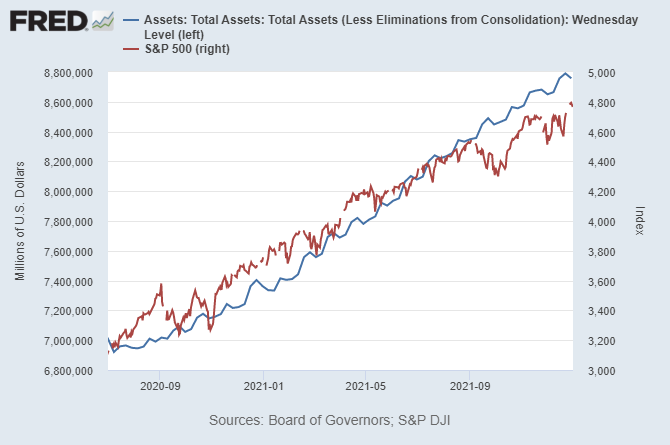From Whatever It Takes To Retiring Transitory – The End of the Post-COVID Bubble

On Monday March 23, 2020 before the market opened – in the midst of the COVID panic – Chairman Powell essentially told financial markets that he would do whatever it took to support financial markets:
The Federal Reserve will continue to purchase Treasury securities and agency mortgage-backed securities in the amounts needed to support smooth market functioning and effective transmission of monetary policy to broader financial conditions – FOMC Statement March 23, 2020 [bold and italics added]
Just a week before, the Fed had said they would buy at least $500 billion in treasuries and at least $200 billion in agency backed mortgage securities. On March 23, however, the Fed did not list an amount but said “in the amounts needed“, effectively writing a blank check. The Fed bought $375 billion in treasuries and $250 billion in mortgage backed securities over the next week, according to Adam Tooze in his book Shutdown: How Covid Shook the World’s Economy (2021, pg. 129).
On Tuesday November 30, 2021 – in testimony before Congress – Powell effectively announced the winding down of this period of unprecedented monetary stimulus when he said that it was time to retire the word “transitory” with respect to inflation that had proven anything but. On Wednesday December 15, 2021 Powell and the Fed followed through on their newfound concern with inflation, doubling the pace of their asset purchase tapering to end in March 2022.
As you can see in the chart at the top of this blog comparing the increase in the Fed’s balance sheet with the rise in the S&P, there has been an almost one to one correlation for at least the last 18 months. This is no accident as it is not correlation. The Fed’s enormous purchases of treasuries and mortgage backed securities have flooded the financial markets with cash and much of that cash has found its way into stocks.
In fact, most of that money has flowed into just seven leading stocks with a combined market cap of ~$12 trillion (AAPL MSFT AMZN GOOG/GOOGL TSLA FB NVDA). As the Fed decreases its asset purchases in 2022, it’s all but inevitable that the pace of stock market gains will slow – and likely reverse. Keep your eye on the biggest seven stocks as they are the ones propping up the entire market.
